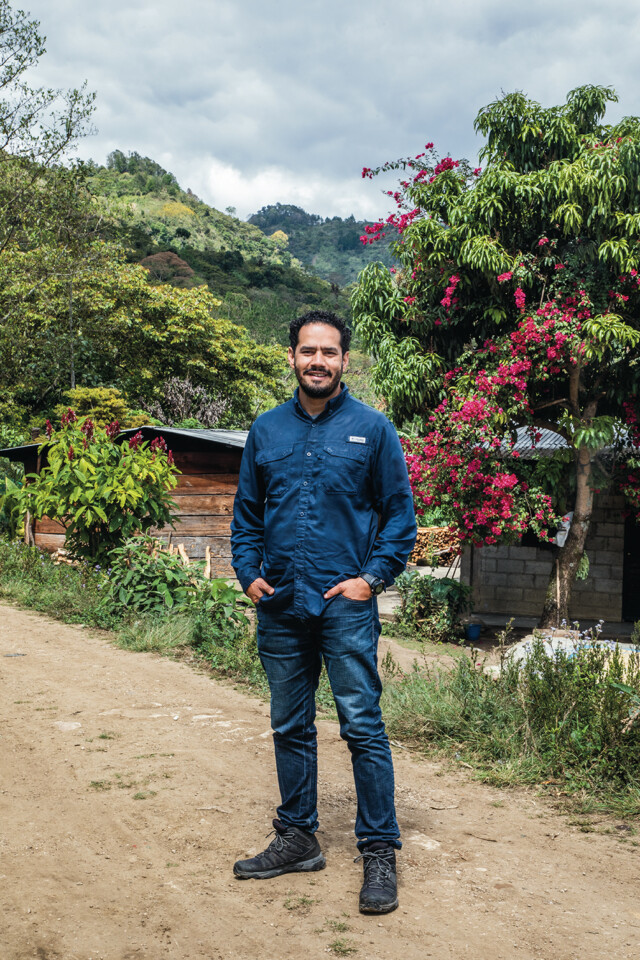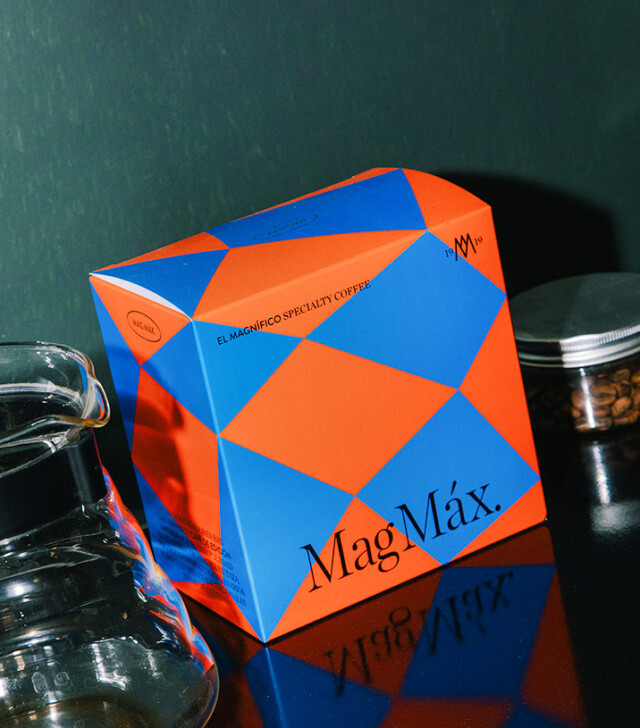Mexico Samira López
Every year, around this time of year, we select exceptional small batches produced by outstanding coffee growers.
This 2025 selection includes SL28, Pink Bourbon, Geisha, and Bourbon Honey varieties.
Cafeólogo
Cafeólogo is the initiative of Jesús Salazar, a project that seeks to transform coffee into a complete experience, where sensorial quality goes hand in hand with a deep ethical commitment.
His approach combines science, philosophy, art, and hospitality, creating a bridge between producers and consumers through coffee culture. Jesús trained in medicine and philosophy, which allows him to approach coffee with technical rigor and a humane and thoughtful perspective.
Cafeólogo’s goal is to offer exceptional cups of coffee, taking care of every step: from the plant and the agricultural process to the preparation and final enjoyment, always following principles of sustainability and respect for people. He works with various farms to promote their coffees around the world.
More than just a coffee, it’s a space for dialogue and exchange around a shared passion for this beverage.
“I was very fortunate to meet Jesús Salazar at a key moment in my professional life. He was my lead judge at my first Cup of Excellence in Costa Rica in 2023. Jesús was the best lead judge I could have imagined because his vast knowledge and ability to communicate taught me so much. Besides being an excellent taster, he is an extraordinary human being with whom I could spend hours philosophizing about coffee, culture, and life,” says Claudia Sans, head of quality control at Cafés el Magnífico.
The Farm
Before becoming a coffee farmer, Samaria López was always a peasant. She and her family lived off the milpa, growing corn, beans, squash, Criollo avocado, sapote, chiles, and many other plants, as her ancestors have done for generations. Coffee came later, integrating itself into this diverse system deeply rooted in Mesoamerican tradition.
Thanks to recent studies, Samaria discovered that her plants are not Bourbon, as her parents told her, nor Garnica, as her neighbors thought, but Catimor. Although the news surprised her at first, it didn’t really change anything: her coffee plantations are still the same ones she knows and works diligently on every day.
Samaria represents the strength and continuity of an agricultural tradition that transcends coffee itself. Her farm not only produces beans, but also keeps alive a sustainable, communal way of life, where each crop is part of an ancestral fabric that connects land, culture, and identity.
Process Method
Once the cherries are harvested at their peak ripeness, they are transported to a wet mill for processing. The cherries are taken to the pulper, where the skin and pulp are removed. They are then transferred to fermentation tanks, in this case without water, for 24 hours to remove the mucilage.
Then, they are taken to the drying yards for 7 days. After these days, when the grain has reached 11% moisture content, they are removed from the drying yards to rest and then sent to the threshing machine.
.
Origin
As in most of Mesoamerica, coffee was first planted in Mexico during the early colonial days, most likely in the late 18th century. However, due to the increased attention paid to the region’s rich mineral deposits and mining opportunities, coffee did not develop as an industry until later, especially in the late 19th and early 20th centuries, with the redistribution of farms, the independence and emergence of small farmers, specifically those of indigenous origin. At the end of the 20th century, the Mexican government established a national coffee institution called INMECAFE, which, like the FNC in Colombia and ICAFE in Costa Rica, was developed to offer technical assistance, information and botanical material, and financial credits to producers.
Unfortunately, INMECAFE was something of a short-lived experiment, disbanding in 1989, leaving producers with a gap in their access to support and resources, especially those in very remote rural areas. This infrastructure disruption and the coffee crisis that followed the end of the International Coffee Agreement plunged Mexico’s coffee growers into desperate financial times, which in turn dramatically affected quality. Throughout the 1990s and since the early 21st century, an increased presence, influence and focus of Fair Trade and Fairtrade certifications and the emphasis of democratically led smallholder cooperative organization have worked to transform the image of Mexican coffee. in one that reflects sustainability, affordability, and relatively easy logistics, considering its proximity to the United States.
In recent years, Mexico has fought mightily with coffee leaf rust and other pathogens that have reduced both yield and cup quality. This, combined with the huge turnover of land ownership and the loss of labor to emigration and relocation has created a tentative future for the producing country, although we have seen great cups and great promises from quality producers and associations. . The best cups are fantastic, and are well worth the long-term work and investment to try to overcome the hurdles faced by the average farmer, who owns between 1-5 hectares. (Although some of the medium-sized farms will run closer to 25 hectares) which helps offset the area’s lack of rainfall. The shade is especially dense to protect the coffee trees from the occasional frost in the region.
22 € – 88 €
This item will be available at a future date. Free shipping from €40 purchase
